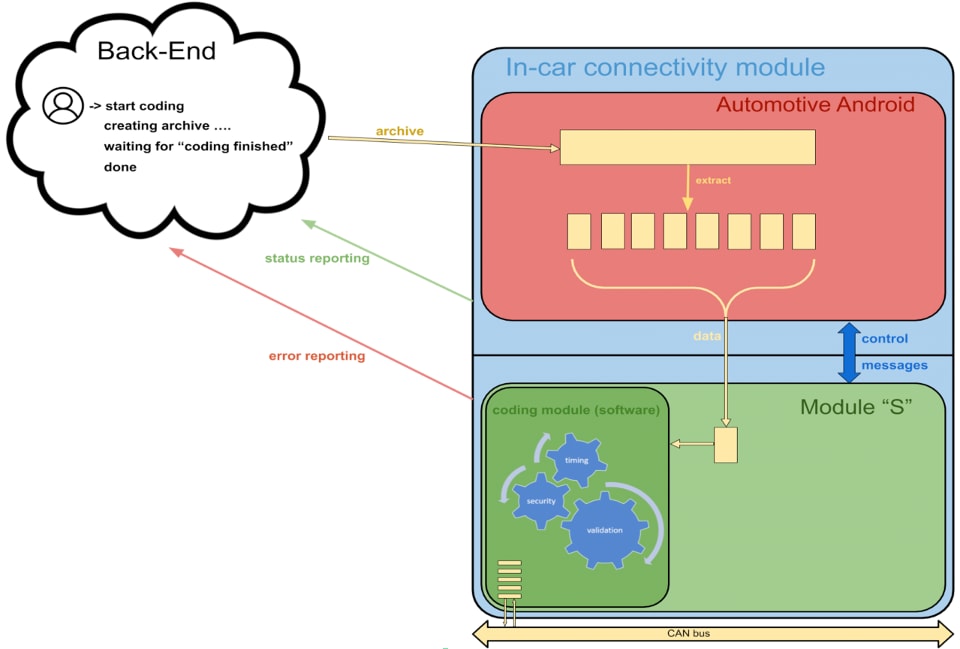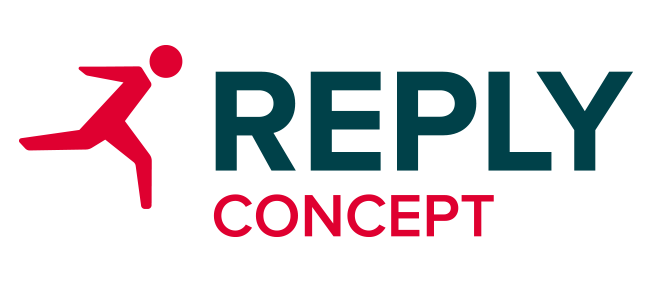,allowExpansion)
Automating Software Updates with Connected Cars
Process Automation as the Key to Cost Reduction in the Automotive Industry
Enabling car features without manual operations – in today’s dynamic IT and car industry, process automation is the key to reducing costs during this process.
However, for many car manufacturers updating a piece of faulty software still means recalling 10,000 cars in an expensive logistical nightmare because the hardware has to be physically accessed.
A client of Concept Reply faced a similar problem: In order to enable a new feature on a car, a technician needed to spend 45 minutes coding via the CAN bus with special hardware and software tools. Concept Reply helped solve this issue by enabling the car sharing module inside the vehicle to execute the coding procedure independently.

Making The Modul "Smart"
There were two possible approaches to automating the process:
Option 1:
Have the client’s servers orchestrate the tasks and the car sharing module act as a mere CAN bus interface.
Option 2:
Have the car sharing module orchestrate the entire process after only receiving an archive from the client’s servers. This meant the module had to be made “smarter”.
For the client option 1 would have meant implementing a complex array of services on their servers so they could manage real-time interaction with every vehicle - a time-consuming task which required good network connectivity for each car during the remote coding process.
Therefore, in cooperation with the client, Concept Reply decided on option 2: The client’s server should merely have to generate an archive with the data needed for the car components. That should enable the car sharing module to independently orchestrate the coding process by downloading the information and writing the changes on the CAN bus while continuously validating the data as well as reporting status changes and errors.
The Automated Coding Process
The fleet manager initiates the coding process through the server frontend by selecting the Vehicle Identification Numbers (VINs) and creating a list of the changes.
The Achievements
Concept Reply successfully delivered a remote, automated car coding solution by configuring the hardware for the coding process while managing all security requirements.
As a result, it enabled the car sharing module to manage car features and give comprehensive status and error reporting during the process with robust verification and fallback mechanisms.
This removed the manual interaction with the vehicle from the coding process. Now managing features on a connected car takes the client only two minutes instead of 45.
This way not only the client’s costs when customizing vehicles are reduced but development time for new software features is faster as well.

Concept Reply is the software development partner of the Reply Group specialised in IoT innovation and offers solutions for its customers in the areas of Smart Infrastructure, Industrial IoT and Connected Car from the idea through the concept phase to implementation, operation and support. With around 50 IoT specialists, the range extends from implementation in the embedded environment to gateway software or cloud applications.